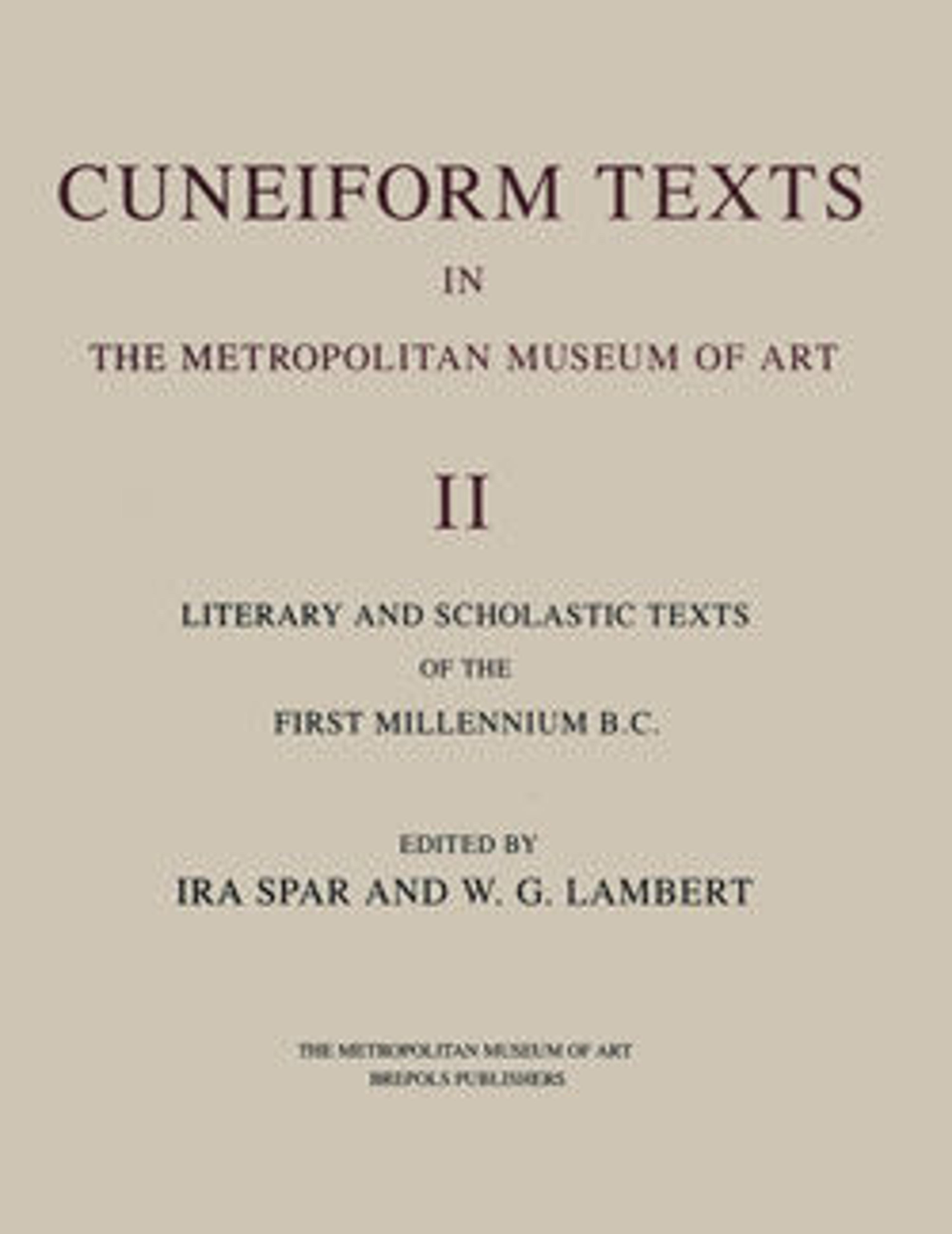Cuneiform tablet: list of magical stones
The invention of writing in approximately 3300 B.C. was one of many developments in administrative technology--including the use of geometric tokens for counting and cylinder seals to guarantee transactions--that accompanied the growth of the first cities and states in southern Mesopotamia. Proto-cuneiform is the name given to the earliest form of writing--pictograms that were drawn on clay tablets. Gradually, the pictograms became abstracted into cuneiform (Latin, "wedge-shaped") signs that were impressed rather than drawn. At its greatest extent, cuneiform writing was used from the Mediterranean coast of Syria to western Iran and from Hittite Anatolia to southern Mesopotamia. It was adapted to write at least fifteen different languages. The last dated cuneiform text has a date corresponding to A.D. 75, although the script probably continued in use over the next two centuries.
This multi-columned tablet contains a list of stones that can be used for various prophylactic or medical purposes. Such texts are well-known in the first millennium B.C. and attest to the body of knowledge collected and used by medical professionals – the physician (Akkadian asu) and the magician (Akkadian ashipu). In the text, which reads from left to right, 303 different stones are listed, grouped together by the condition that they treat. Although very few of the stones listed can be identified for certain, we can identify this text as a list of stones because each entry was labelled with the cuneiform sign for "stone".
This multi-columned tablet contains a list of stones that can be used for various prophylactic or medical purposes. Such texts are well-known in the first millennium B.C. and attest to the body of knowledge collected and used by medical professionals – the physician (Akkadian asu) and the magician (Akkadian ashipu). In the text, which reads from left to right, 303 different stones are listed, grouped together by the condition that they treat. Although very few of the stones listed can be identified for certain, we can identify this text as a list of stones because each entry was labelled with the cuneiform sign for "stone".
Artwork Details
- Title:Cuneiform tablet: list of magical stones
- Period:Achaemenid or Seleucid
- Date:ca. mid- to late 1st millennium BCE
- Geography:Mesopotamia
- Culture:Achaemenid or Seleucid
- Medium:Clay
- Dimensions:2 7/8 × 3 1/8 × 1 1/8 in. (7.3 × 7.9 × 2.9 cm)
- Credit Line:Purchase, 1886
- Object Number:86.11.64
- Curatorial Department: Ancient West Asian Art
More Artwork
Research Resources
The Met provides unparalleled resources for research and welcomes an international community of students and scholars. The Met's Open Access API is where creators and researchers can connect to the The Met collection. Open Access data and public domain images are available for unrestricted commercial and noncommercial use without permission or fee.
To request images under copyright and other restrictions, please use this Image Request form.
Feedback
We continue to research and examine historical and cultural context for objects in The Met collection. If you have comments or questions about this object record, please contact us using the form below. The Museum looks forward to receiving your comments.
